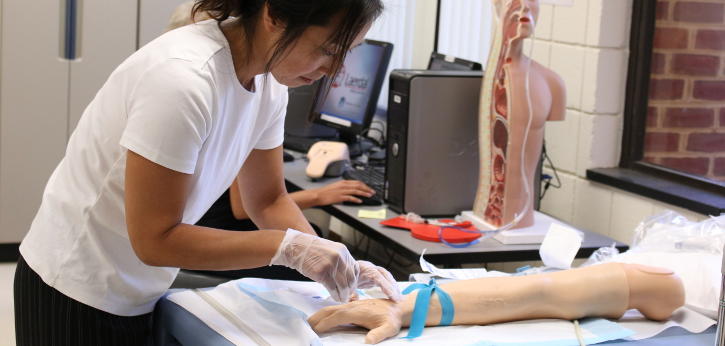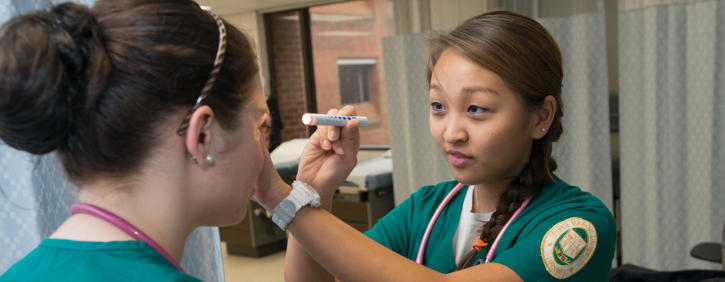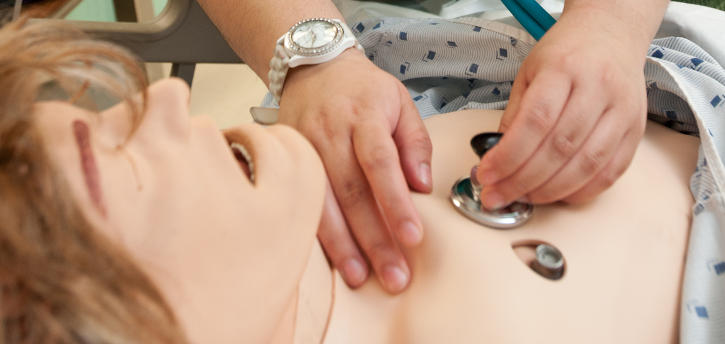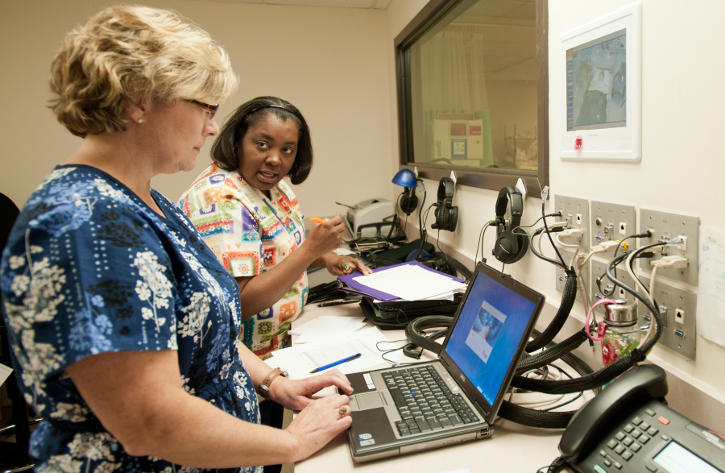The Skills Laboratories are a well-established learning environment for all levels of nursing students within the School of Nursing. Each skills lab houses a Smartboard, which is used to support and facilitate psychomotor learning. It is the hands-on experience in these labs that George Mason nursing students use to develop competencies in multiple simulated health care settings that cross the human life span.
Work in the Skills Laboratory is integrated throughout the traditional and accelerated Bachelor of Science in Nursing curriculum, beginning with Fundamental Basic Learning and Skills Training, in which students learn basic hygiene, mobility, feeding, and vital physiologic skills, and ending with the more advanced, high acuity physiologic skills. The graduate nursing program accesses the laboratories for the nurse practitioner students to learn and practice essential skills needed for the advanced practice of nursing.
The Simulation Laboratory is an intricate part of student learning. It provides a foundation for critical reasoning, synthesis, and analysis of increasingly complex care scenarios. It is one of the School of Nursing’s most innovative features. The lab has six hospital bed stations and exam areas, a birthing and pediatrics simulation area, a mock nurse’s station, and medication room. There are four video cameras per patient bed for performance recording and review during a debriefing period. It is here that George Mason’s nursing students can expand their knowledge and training by participating in administering health care in a hospital, before, and along with, their clinical experiences.
Our simulation lab is home to a variety of simulated (mannequin) patients ranging in age from infant to adult, male and female, and a pregnant mannequin that can deliver her baby. All of the mannequins, from low to high fidelity, have names, personal histories, and life-like features such as a palpable pulses, voices, blinking eyes, and a rising and falling chest to simulate breathing. These mannequins can be manipulated, using a computer and compressed air, to have physiologically accurate responses to the care provided by students. Additional equipment, such as IV pumps, EKG monitors, respiratory equipment, wound care equipment, an automated medication dispensing machine, and crash carts, add to the reality of the learning space. There also exists the ability to perform moulage, which gives select patients the ability to appear “more real.”
To facilitate the simulated learning environment, the Simulation Lab has an observation/control room with computers for every mannequin and two one-way mirrors that allow faculty to direct and evaluate student performance, without be directly involved. This allows the student to develop decision-making, prioritization, and communication skills without the comfort of an instructor. The lab is equipped with state-of-the-art, custom-designed audiovisual equipment used for both formative and evaluative learning. There is also a debriefing room, which is used to conduct reflective discussions and video review, using a Smartboard, following a simulated learning experience. This presents a realistic hospital in a simulated environment—a “Virtual Hospital”—in which students synthesize didactic and clinical knowledge as they transition into professional practice.




